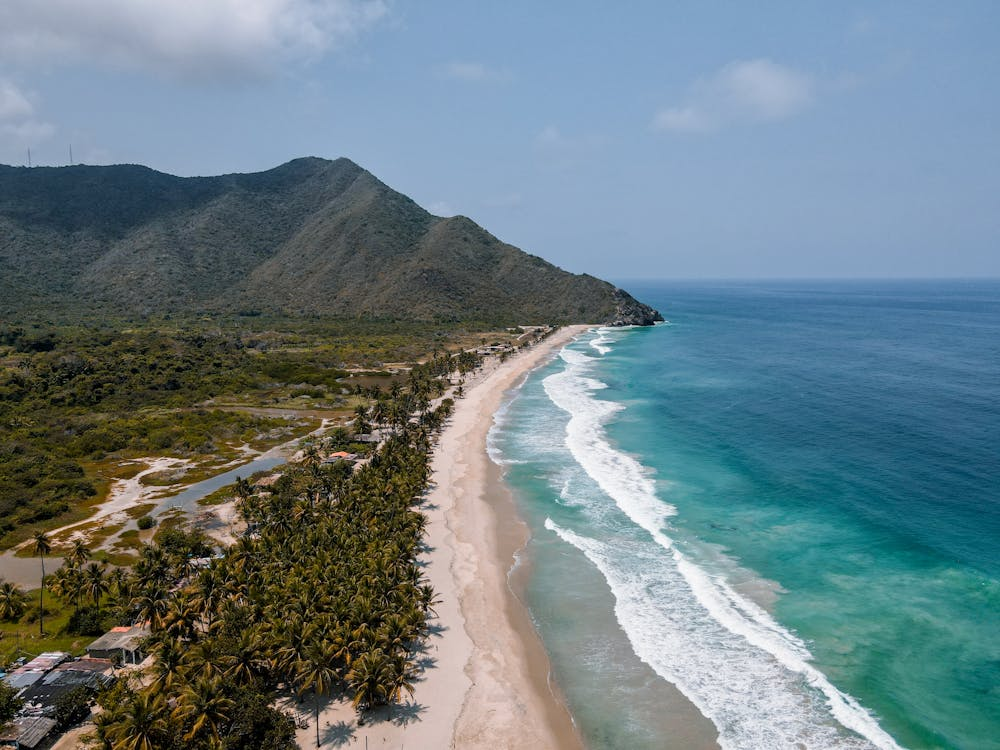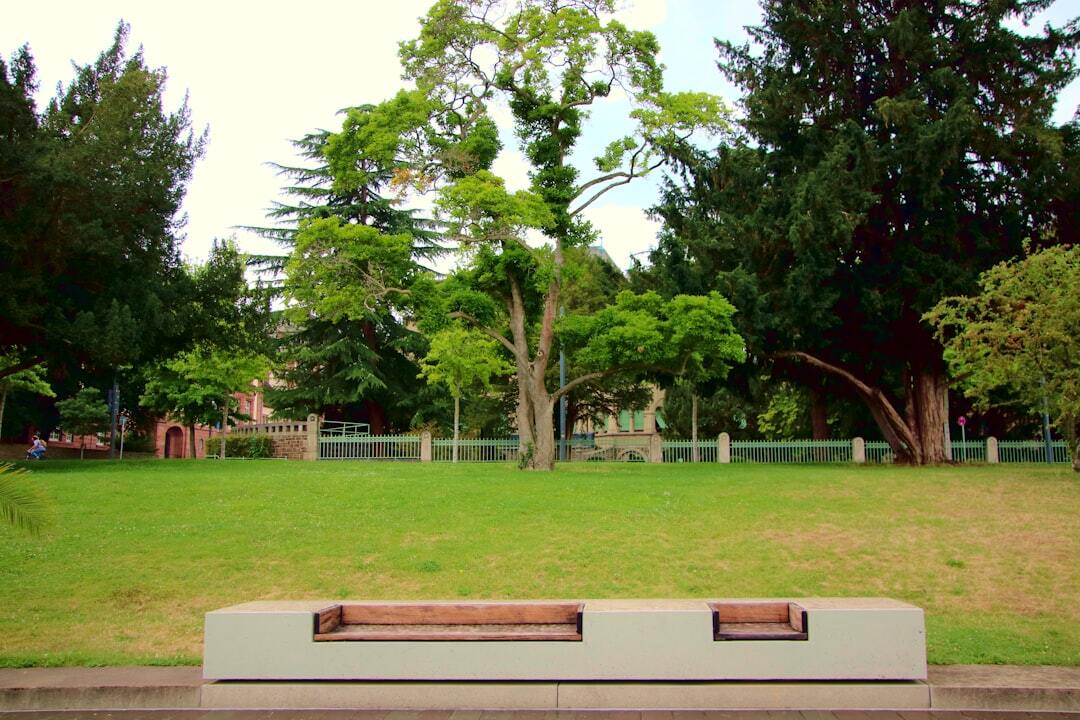Stay connected while exploring the breathtaking landscapes and vibrant culture of Venezuela with Airtel’s International Roaming plans, ensuring seamless communication as you visit the top 10 must-see destinations in this stunning country.
Buy International Roaming Pack
Venezuela is a land of superlatives. It’s home to the world’s highest waterfall, South America’s largest lake, and the longest coastline in the Caribbean. Yet this captivating country remains one of the least visited places in the region.
For adventurous travellers undeterred by its challenges, Venezuela offers an enticing mix of lush jungles, towering mountains, pristine beaches, and vibrant cities. Here’s our insider’s guide to the best places to visit in Venezuela, complete with practical tips to help you navigate this complex yet compelling destination.
1. Salto Ángel (Angel Falls)
Plunging 979 metres from the tabletop mountain of Auyán-tepui, Salto Ángel is the world’s highest uninterrupted waterfall. Located in the heart of Canaima National Park, reaching the falls involves a river journey plus a trek through the jungle. The best time to visit is the rainy season (May to November) when the falls are at their most powerful.
Getting There: Fly to Puerto Ordaz, then take a smaller plane to Canaima village. From there, it’s a boat ride upriver followed by a hike to the viewpoint.
Where to Stay: Camping is the only option near the falls. Most visitors stay in Canaima village, which has several rustic lodges.
Top Tip: Be prepared for a physically demanding trip. Hire a reputable guide and bring plenty of insect repellent.
2. Morrocoy National Park
Located on Venezuela’s Caribbean coast, Parque Nacional Morrocoy is known for its white-sand beaches, mangrove forests, and coral reefs. It’s a popular spot for swimming, snorkelling, and birdwatching.
Getting There: The park is a 4-hour drive from Caracas. Buses run regularly from the capital to the nearby town of Tucacas.
Where to Stay: Tucacas and Chichiriviche have a range of accommodation options, from budget hostels to upscale resorts.
Top Tip: Visit during the week to avoid the crowds that descend on weekends and holidays.
3. Mérida
Nestled in the Andes Mountains, Mérida is a charming university town known for its colourful colonial architecture and outdoor activities. It’s the jumping-off point for trips to Venezuela’s highest peak, Pico Bolívar, and the world’s longest and highest cable car.
Getting There: Mérida has a small airport with flights from Caracas. Buses also run regularly from major cities.
Where to Stay: Mérida has a wide range of hotels and hostels to suit all budgets. Look for a place in the historic centre for easy access to attractions.
Top Tip: Take the teleférico (cable car) for breathtaking views over the city and the surrounding mountains.
4. Los Roques Archipelago
Los Roques is a chain of around 350 islands, cays, and islets in the Caribbean Sea. With its turquoise waters, powdery beaches, and vibrant coral reefs, it’s a paradise for beach lovers and water sports enthusiasts.
Getting There: Fly from Caracas to the airstrip on El Gran Roque, the archipelago’s main island.
Where to Stay: El Gran Roque has a variety of posadas (guesthouses) and small hotels. For a more secluded experience, stay on one of the outer islands.
Top Tip: Bring cash, as there are no ATMs on the islands and credit cards are not widely accepted.
5. Roraima Tepui
Rising like a fortress from the surrounding savannas, Mount Roraima is one of Venezuela’s most iconic landmarks. This tabletop mountain, known as a tepui, straddles the border between Venezuela, Brazil, and Guyana. Trekking to the summit is a challenging but rewarding adventure.
Getting There: The trek begins from the village of Paraitepui, which can be reached by road from the town of Santa Elena de Uairén.
Where to Stay: Camping is the only option on the trek. In Santa Elena, there are several budget hotels and hostels.
Top Tip: Hire a local guide and porters to help with navigation and carrying supplies.
6. Orinoco Delta
The Orinoco Delta is a vast network of rivers, creeks, and islands where the Orinoco River meets the Atlantic Ocean. It’s a unique ecosystem home to a rich diversity of wildlife, including monkeys, river dolphins, and hundreds of bird species.
Getting There: The main gateway to the delta is the city of Tucupita, which can be reached by air or road from Caracas.
Where to Stay: Most visitors stay in rustic lodges or camps within the delta, which are usually reached by boat from Tucupita.
Top Tip: Take a guided boat tour to spot wildlife and visit Warao indigenous communities.
7. Choroní
Choroní is a picturesque coastal town known for its laid-back atmosphere, colonial architecture, and beautiful beaches. It’s a popular weekend getaway spot for Caracas residents.
Getting There: Choroní is a 3-hour drive from Caracas. Buses run regularly from the capital to Maracay, where you’ll need to change to a local bus or taxi.
Where to Stay: Choroní has a variety of posadas and small hotels. Look for a place near the beach or in the historic centre.
Top Tip: Try the local speciality, chuao chocolate, made from cacao grown in the nearby village of the same name.
8. Coro
Coro is a historic city known for its well-preserved colonial architecture and nearby desert landscapes. It was the first capital of Venezuela and is now a UNESCO World Heritage site.
Getting There: Coro has an airport with flights from Caracas. Buses also run regularly from major cities.
Where to Stay: Coro has a range of hotels and guesthouses, many of which are housed in restored colonial buildings.
Top Tip: Visit the nearby Médanos de Coro National Park to see its towering sand dunes and unique desert vegetation.
9. Caracas
While Caracas has a reputation for being dangerous, Venezuela’s capital city also has a vibrant cultural scene and several interesting attractions. Highlights include the historic city centre, the Cerro El Ávila National Park, and the world-class Museum of Contemporary Art.
Getting There: Caracas is served by the Simón Bolívar International Airport, which has flights from major cities in the Americas and Europe.
Where to Stay: Caracas has a wide range of accommodation options, from budget hostels to luxury hotels. Look for a place in a safe, well-connected area such as Chacao or Las Mercedes.
Top Tip: Take the metro cable, a cable car system integrated with the city’s metro, for panoramic views over the city and the surrounding mountains.
10. Colonia Tovar
Colonia Tovar is a picturesque German settlement located in the mountains near Caracas. Founded in 1843 by immigrants from the Black Forest region, it’s known for its Bavarian-style architecture, cool climate, and charming restaurants serving German-Venezuelan fusion cuisine.
Getting There: Colonia Tovar is a 1.5-hour drive from Caracas. Buses run regularly from the capital to the town of La Victoria, where you’ll need to change to a local bus or taxi.
Where to Stay: Colonia Tovar has several small hotels and guesthouses, many of which are housed in traditional Bavarian-style buildings.
Top Tip: Try the local speciality, the Colonia Tovar Brewing beer, made in the town’s own microbrewery.
Staying Connected in Venezuela with Airtel’s International Roaming Plans
While travelling in Venezuela, staying connected is important for making reservations, checking opening hours, and navigating unfamiliar places. However, relying on WiFi can be tricky, as internet access can be patchy outside major cities.
One solution is to use an international roaming plan, such as those offered by Airtel for its postpaid customers. These plans provide data, calls, and texts ensuring you have reliable connectivity wherever your travels take you.
With an Airtel international roaming plan, you can stay connected, share your experiences, and make the most of your time in this captivating country.



